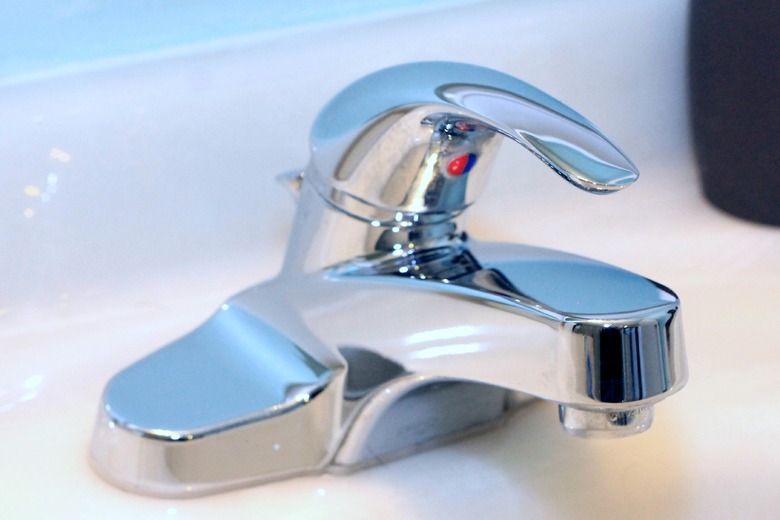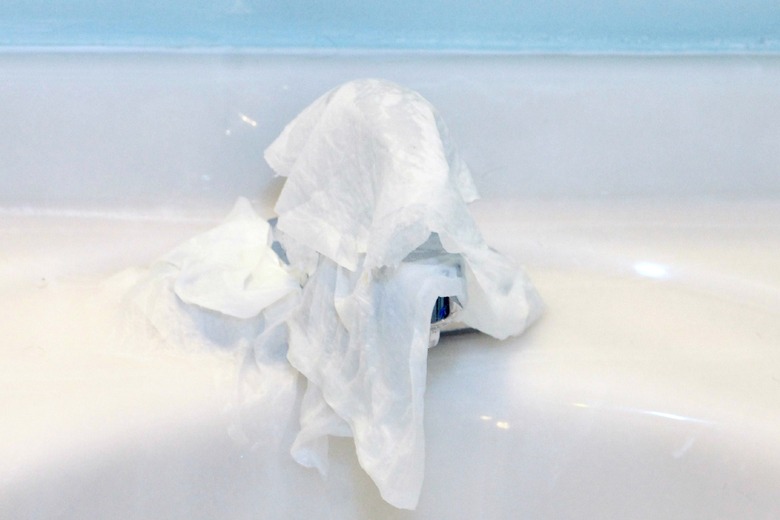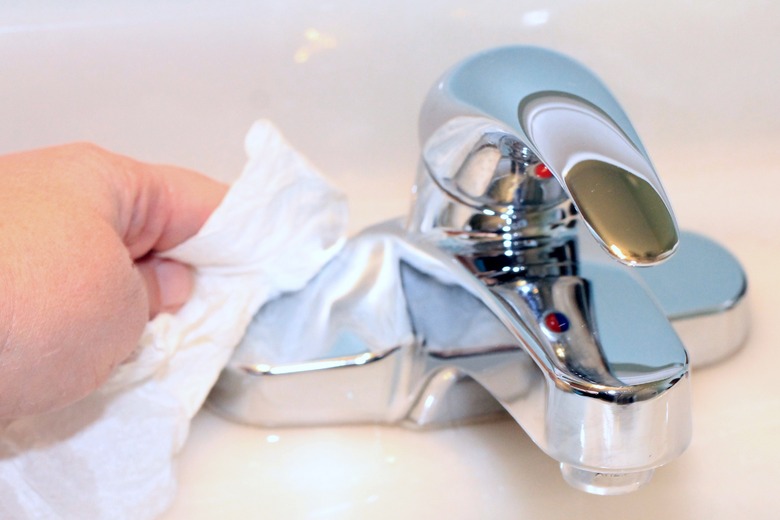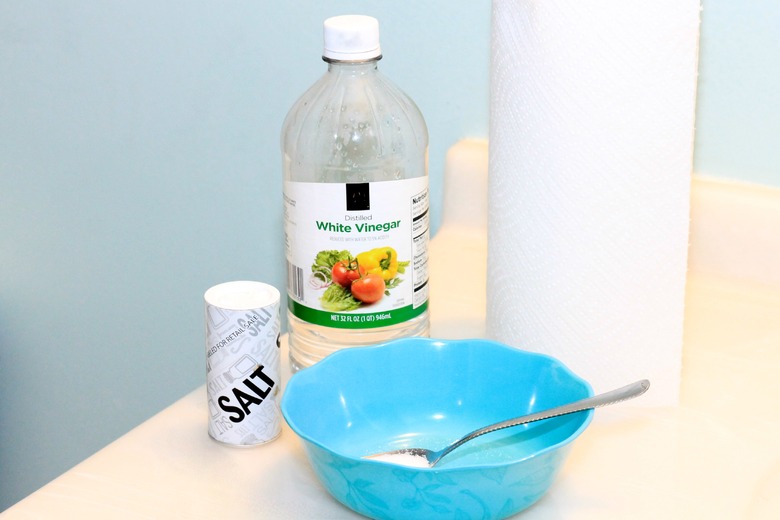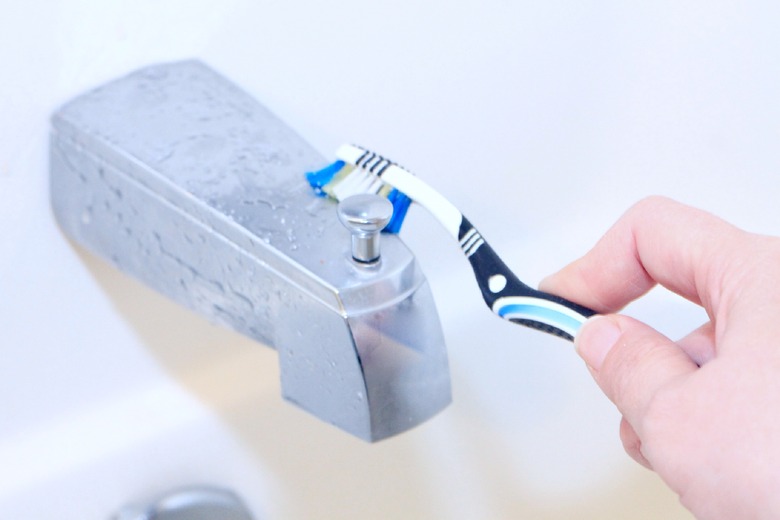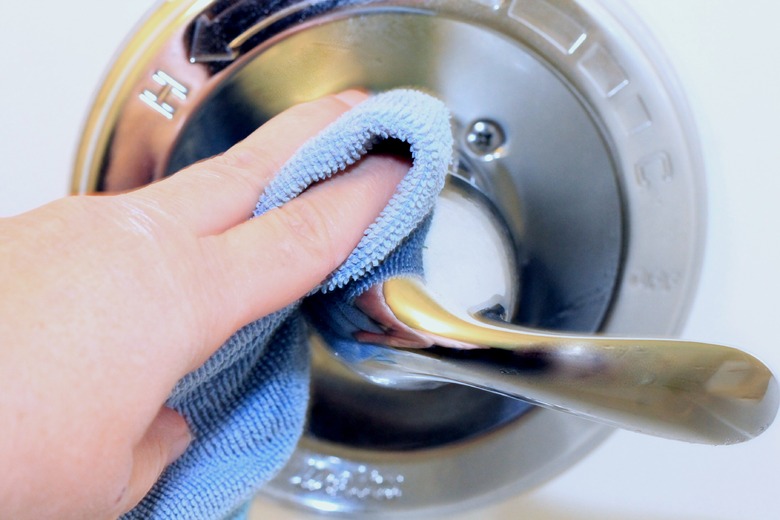How To Remove Mold From Stainless Steel
Things Needed
-
Paper towels
-
White vinegar
-
Bowl
-
Table salt
-
Spoon
-
Old toothbrush
-
Clean cloths
Tip
Keep a bottle of diluted white vinegar handy. Spray heavily used stainless steel surfaces such as faucets daily to remove stains and keep mold at bay. You also can use diluted bleach or full-strength hydrogen peroxide to remove mold stains from stainless steel.
Warning
Don't use abrasive cleansers that can scratch the stainless steel.
Mold spores thrive on porous surfaces — that's why clean stainless steel isn't a conducive environment for mold development. Dirt or mineral accumulations, however, provide a perfect habitat for mold growth. To prevent mold from taking hold on stainless steel, you must keep the surface clean. Where mold already exists, you can easily eliminate it with common household cleaning materials.
Step 1
Soak paper towels with full-strength white vinegar and lay them over the mold spots on the stainless steel. Leave the paper towels in place for 10 minutes to kill the mold spores.
Step 2
Remove the paper towels and discard. Wipe the surface of the stainless steel with dry paper towels.
Step 3
Pour 2 tablespoons of white vinegar into a bowl and add 1 tablespoon of table salt. Stir the mixture to create a paste.
Step 4
Dip an old toothbrush in the paste and scrub the mold stains remaining on the stainless steel surface. Rinse the brush frequently. Apply more paste and continue to scrub.
Step 5
Rub the stainless steel surface gently with a clean cloth to remove the paste. Moisten another cloth with white vinegar and wipe the stainless steel surface clean. Dry with another cloth.
